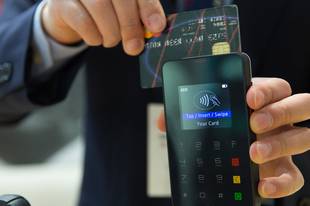
All manufacturers need to distribute their products, and most use intermediaries. The number of tasks to be carried out by the channels of distributions is large, and in different industries these may be split in various ways between different channels/ members. Every channel member should be understood as an individual business with its own objectives and strategy, but working in a symbiotic system in which members depend on each other.
The relationship between supplier and distributor should be managed so that both gain from it. The growth of retailer multiplies with huge buying power has major strategic implication for manufacturers. It is very important for the manufacturers to understand their retailer customers, analyze their own brand portfolio, develop a new strategy towards their customers, and change their organization structure and methods of operation.
According to Randall, information technology has had just as much impact in retailing as elsewhere in business; some of it is visible, but much that is extremely important is hidden. Since development is so rapid, some of the applications described here will have been overtaken by events. The major application areas will be described briefly.
1. EPOS and scanning
Most people are familiar with Electronic Point of Sale (EPOS), particularly when allied to scanning. Scanning equipment uses a window, wand or gun to capture electronic system agreed by the Article Numbering Association, and now appear on outer and inner packs used by wholesalers and cash-and-carry outlets. With EPOS, the till becomes in effect a computer terminal, and every transaction is recorded in a back office computer. This local computer can be downloaded daily to a central headquarters as well as being used for local applications. EPOS systems are now installed in a very wide variety of retail and wholesale outlets.
It can readily be seen that EPOS systems produce enormous amounts of data, and potentially very valuable information. They can be linked to stock control in real time, and in more advanced applications fed directly into recording programs. They provides detailed and precise measurements of sales patterns and the effects of price changes, promotions and indeed any experimental variable.
This information is very useful to the retailers and of great interests to manufacturers, too. It is another sign of the swing in the balance of power that retailers now have much more information than manufacturers. Some retailers sell their data, and the ideal position would be for a central market research firm to set up a syndicated system for each major market. There are some moves in that direction, but it seems likely that there will always be some retailers who refuse to cooperate, thus limiting the usefulness of the aggregated data.
EPOS systems do have some drawbacks, in that they may cause extra work in bringing in any changes, such as promotions; this may make retailers even more reluctant to accept their suppliers want them to do, or may make them change even more for the service. On the other hand, some forms of promotion, such as "four for the price of three" are much easier, as they can be programmed into the system; the till will count the items, no matter the order in which they appear.
2. EDI and other acronyms
Electronic Data Interchange (EDI) allows a retailer and manufacturer to link in their computer directly, allowing rapid communication and, it is hoped, fewer errors. Many companies now use EDI for orders, and some are using if for invoicing and queries. Eventually payment will be made this way too. There are cost saving potentially available to both partners, and possibly some savings in stock levels. It is, moreover, an excellent example of partnership between manufacturers and retailers; some who have experienced it have found that it generated greater cooperation throughout the trade marketing area.
Clearly a problem in any system is getting computer systems to talk to each other. The Article Numbering Associations has led the way in introducing TRADACOMS, a procedure for structuring data and messages so that they can be exchanged between them and their trading partners in complete security.
There are still problems to be worked out, but the direction is crystal clear. It is very much in the internet of manufacturers to be aware of developments so that they can prepare their own systems and ensure that they are not unwittingly causing problems to their customers.
3. Direct Product Profitability (DPP)
Direct Product Profitability (DPP) is really management accounting applied to products moving through the distribution system. Traditionally, both manufacturers and retailers have concentrated on the gross margin (the difference between retail selling price and manufacturer's selling price). DPP looks at all the costs involved in moving the product through transport, warehousing, handling and storage in the shop. The differing nature of products (size, shape, density), width and depth of the range (number of sizes, flavors, etc.), the selling characteristics (high or low turnover) will all affect DPP in addition to the margin and volume. Products with identical gross margin may turn out to have different DPP.
Many manufacturers now use DPP calculations routinely to check whether there are any negatives for the retailers in changes they may be considering. They will tell their customers if there is a good story ("This packaging change enhances your DPP by so many percent"); sometimes, they will make changes specifically for DPP reasons, for example by redesigning an efficient package-but they must be careful not to damage the brands appeal to consumers.
Today, DPP seems not to be used in the negotiations, as retail buyer's performance is still measured on gross margin, but this may change. As with EDI, DPP may be an area in which the partners can work together to their natural benefits.
4. Space Management Systems
The availability of good data and cheap computing power has led to space management models, which try to help retailers make the complex decisions about precisely what products to stock, where, and in what quantities. Essentially, the model takes a category (often one fixture or by shelving) and examines the effect of an overall sales and profit of different ways of filling the shelves. Inputs are stock level required, policy decisions (e.g. no. pack weighing more than 5 kg. above shoulder height), the effect of different shelf position on sales (using judgment or scanning data), and product and margin data. The model ranks brands according to the criterion selected (sales, gross profit, or some complex profit return figure); where space is limited (which it always is), the lowest-ranked brands drop off the bottom of the list when capacity is reached.
Space management systems can evaluate particular layouts or search for an optimum. The output is in the form of planograms (a drawing of the proposed shelf layout) and tables of detailed statistics. Current developments will allow such single-store category applications to be aggregation to look at all the stores in a multiple.
The models are obviously of use to retailers. Manufacturers also use them to check the effect of proposed pack changes or the introduction of new varieties and new brands. Clearly, when space is at premium, and manufacturers are fighting for what they see as adequate display of their brands, it is vitally important for them to see things from the retailer's point of view. The output of space management systems will therefore continue to be used, hopefully in a position way by both partners; at worst, manufacturers must be prepared with defensive arguments.
5. The Future
To date, all the systems identified are separated. One future development must be towards greater integration/ coordination (synergism). One package which claims to integrate accounting merchandise control offers:
1) links to EPOS and scanning
2) inventory and sales performance by category
3) price ticket generation
4) price change control
5) open-to-buy forecasting and planning
6) store transfer
7) back-door control
8) invoicing and cash control
9) salesperson performance control
Other developments include greater automation within shops, and teleshopping.
The introduction of smart cards may allow the development of direct marketing by retailers, as they will be able to build up a data base of individuals' purchasing from their EPOS system and link it to addresses.
The message for all those marketing to and through retailers is that they must be aware of the developments, perhaps even slightly ahead of their customers in understanding the implications of these messages, and ready to use them in serving their customers better while meeting their own objectives.


















